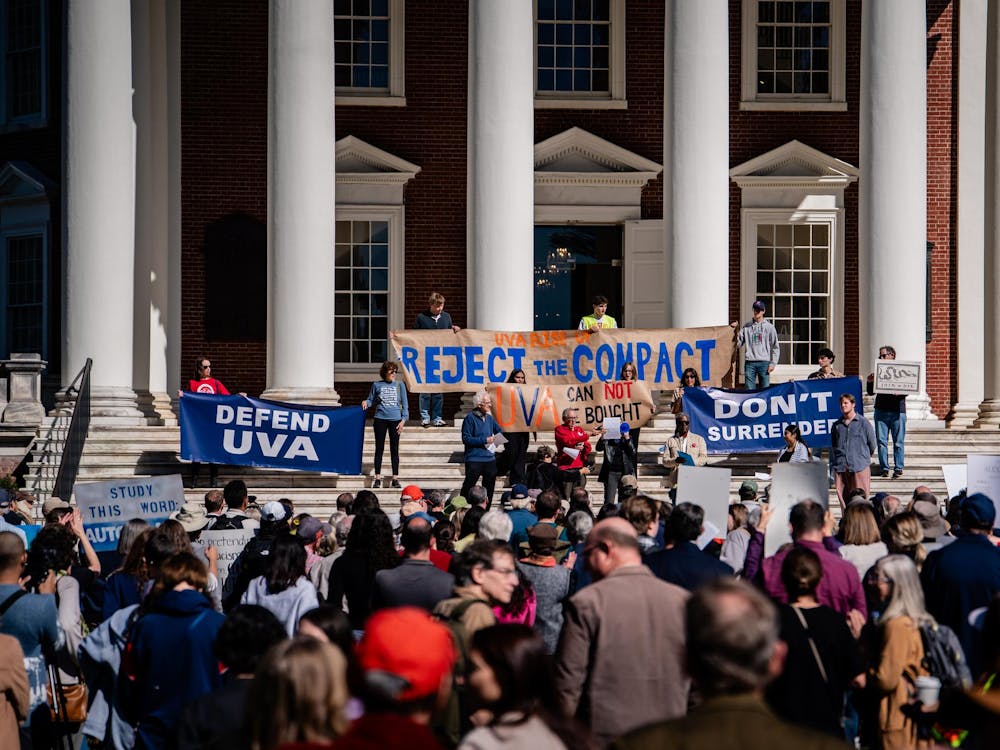The University is not the only Virginia institution fond of describing itself as a “public ivy.” The College of William & Mary has branded itself as a public liberal-arts college that rivals its more prestigious private peers.
The “public ivy” label entices students seeking an education that is high-quality but not high-cost. It also betrays the Ivy League inferiority complex that plagues many top-drawer public institutions.
In terms of academic quality, the University and William & Mary both can make a good case for why they merit the moniker. From an operational standpoint, however, William & Mary is beginning to look more ivy and less public.
The Williamsburg school unveiled a new tuition and fees structure Friday. The operational model, dubbed the “William & Mary Promise,” resembles the high-tuition, high-aid approach many selective private institutions, including most ivies and Ivy League equivalents, employ.
Tuition will rise sharply. New in-state students entering William & Mary this fall will pay $10,428 in tuition. Virginia residents entering in fall 2014 will pay $12,428 — an increase of nearly 20 percent. The fall after, in-state tuition will jump again, this time to $13,794.
The school, however, will freeze in-state tuition for each entering class. Freshmen entering in fall 2013 will pay $10,428 in tuition for each of their four years at William & Mary.
Out-of-state students entering William & Mary in fall 2013 will have a tuition increase of 3 percent — the lowest increase in 11 years.
A renewed commitment to financial aid further offsets the tuition hikes. The school plans to increase the amount of need-based aid it offers in-state students by 50 percent in the next four years. It will use most of the increased aid to replace loans with grants. William & Mary officials say that under the new model, the net tuition most Virginia students receiving financial aid pay will decrease, despite the rise in tuition.
William & Mary’s new operational model is notable because public colleges in many states have taken a much different strategy in light of recent drops in state funding. Some public universities, most notably in the University of California system, have combated financial woes by accepting more and more out-of-state students, who pay substantially higher tuition rates. William & Mary’s approach, in contrast, reduces rather than increases the school’s reliance on out-of-state students.
Other state schools — such as Idaho’s public universities, which raised tuition by 9 percent or more at three campuses last year — have coped with funding gaps by ratcheting up their sticker prices. While William & Mary’s plan entails significant tuition increases, its tuition-freeze guarantee means its rates, though high, will be predictable. Students and parents will not have to worry about year-by-year hikes.
The University has not ceded to William & Mary’s high-tuition, high-aid strategy nor to the University of California’s tactic of admitting more out-of-state students. The University’s tuition and fees structure has elements of both approaches — high out-of-state tuition makes the school financially dependent on non-Virginians, though the institution has kept its out-of-state ratio fairly constant in recent years — but it has more in common with the former than the latter. The Board of Visitors last week approved moderate tuition increases. These hikes were substantial enough that Rector Helen Dragas voted against them in an uncharacteristically populist maneuver, but they are nowhere as dramatic as William & Mary’s tuition increases. The University has distanced itself from the high-tuition, high-aid model in another important respect: in setting next year’s tuition and fees, the University did not strengthen AccessUVa in any visible way.
A high-tuition, high-aid strategy may not be right for the University’s fiscal health at this stage. But there’s at least one lesson the school can draw from Jefferson’s alma mater. William & Mary expects to generate more than $8 million in new revenues in 2013-14 under its new financial model. The school has earmarked nearly $5 million of its expected revenue increase to faculty and staff salaries. That sort of proportional commitment is key for any institution that wishes to brand itself a public ivy.






